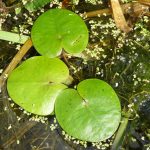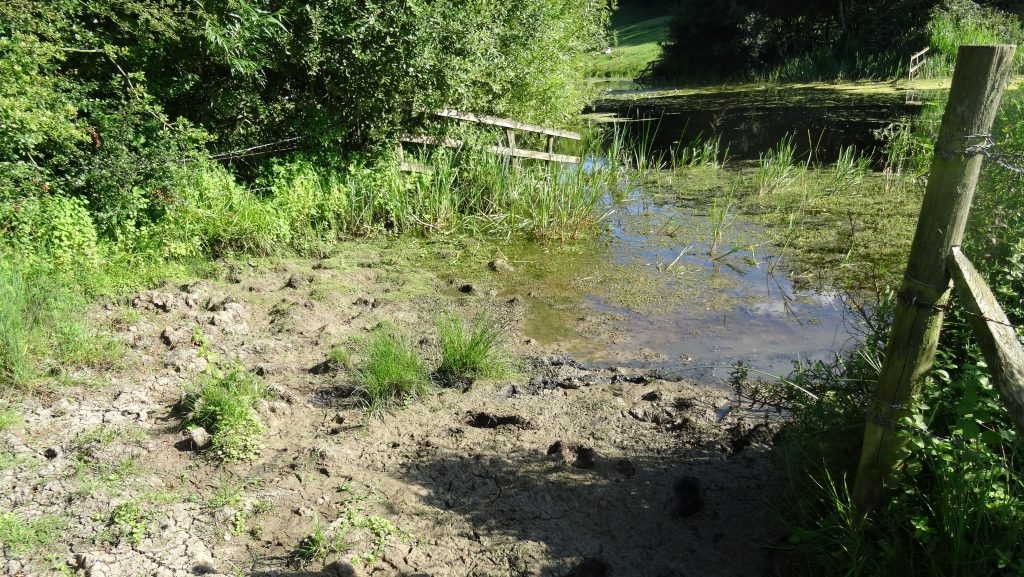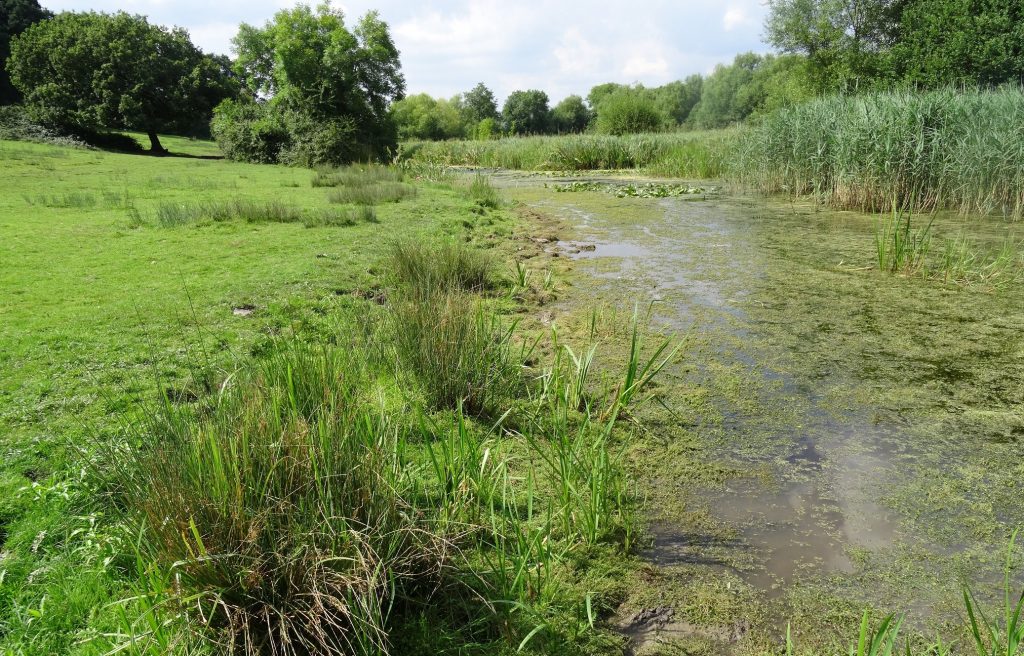Flagship Focus: Langham Pond 2018
1st May 2018
Langham Pond, at Runnymede, is a wonderfully rich Flagship Pond with a long history and some very rare inhabitants

Runnymede, managed by the National Trust, has three main ponds that all lie along the line of an ancient braided channel of the River Thames. That channel was abandoned sometime in the last 500 years and gradually silted up. Of the three ponds, Langham Pond is undoubtedly the jewel in the crown.

Langham Pond is of national importance, and supports a remarkable array of nationally rare species. Its uncommon plants include Greater Water-Parsnip (Sium latifolium), Tubular Water-dropwort (Oenanthe fistulosa) and Marsh Stitchwort (Stellaria palustris), and a long list of plants that are Red listed in England such as Round-fruited Rush (Juncus compressus) and Frogbit (Hydrocharis morsus-ranae) – the latter an exceptionally uncommon plant in south east England. Langham Pond is also purported to be one of only two UK sites for the Frogbit smut (Tracya hydrocharidis) and one of very few UK sites for Metopomyza ornate – a leaf-mining fly of the beautiful Flowering Rush (Butomus umbellatus). There are also past records of a healthy population of the scarce Variable Damselfly (Coenagrion pulchellum).
There are several reasons that Langham Pond and it’s neighbours have remained so important, whilst other ponds in the wider landscape have degraded.
Firstly, they have good water quality. Almost all the uncommon aquatic plants found in and around the ponds only occur at sites where water quality is good, and unpolluted by nutrients like nitrate and phosphate. Runnymede is very fortunate that its ponds all drain areas of unfertilized grassland and woodland, rather than roads, agricultural fields or urban areas.

Secondly, it is traditionally managed by grazing. Grazing animals access to the edge of ponds is important to create habitat for many of the site’s plant species that depend on their trampling to create muddy areas and grazing to reduce competition from other plants. A mix of management in other areas adds to the variety of wildlife that the ponds support.
And thirdly, the ancient natural origin of the ponds. Floodplain pools are a very rich natural habitat. The Runnymede ponds have wildlife communities that would once have been typical of the Thames Valley. However most have been lost or spoiled and they are nowadays restricted to a very few nature reserves such as Cock Marsh near Maidenhead, and the best wetlands around Oxford.
Although Runnymede’s ponds remain of great value, there is evidence that they have declined over recent decades, and as part of the Flagship Pond project we made recommendations to help the National Trust address some issues:

- The invasive alien plant New Zealand Pigmyweed (Crassula helmsii) has collonised Langham Pond over the last decade or so. It forms extensive swards that now appear to have out-competed many of the marginal plants here. The presence of Crassula also restricts the potential for site management. Ideally the site would benefit from some tree, and possibly silt removal, however, this would currently be unwise at Langham Pond, because it will encourage rapid growth of Crassula mats in the bare areas left by the management work. This is a great example of a site where a mite that hinders the growth of Crassula could be very beneficial (Defra is currently consulting on permitting the release of the mite as a biological control agent in the UK – closing date 10th May 2018).
- There are advantages and disadvantages to fencing Langham Pond, and getting the right balance is important. Some areas of the pond are almost completely fenced and this is beneficial to rare plants like Marsh Stitchwort and Tubular water dropwort, which benefit from grazing along the inside of the fenceline as stock reach over. Set against this, fencing is other areas has meant they are now heavily shaded by trees. Removing trees from the seasonal inflow ditch would reduce the amount of leaf litter falling in the water and encourage vegetation to develop in the ditch, increasing sediment interception. Both would help to reduce the rate at which this pond is infilling. The National Trust is now carrying out this management work in areas where the chance of Crassula moving into the newly cleared zone is minimised.
- In the last 30 years ecologists have realised that small-scale extinction’s are very common everywhere through entirely natural causes. ‘Extinction debt’ refers to the plants and animals at a site that are essentially ‘dead men walking’: species that are still present – but which will inevitably go extinct in the coming years because, once lost there are no other near-by sources to re-colonise. This is true for many species in Langham Pond: they support a large number of species that are regionally and nationally rare, and if lost, will not be able to recolonise. The National Trust is currently exploring options for collecting and growing some of these plants off site, whilst management work at the site takes place.
Find out more
- Take a look at the National Trust website for information on Runnymede
- Find out more about Flagship Ponds
- Support us as we continue to champion our finest ponds and the amazing wildlife they are home to
